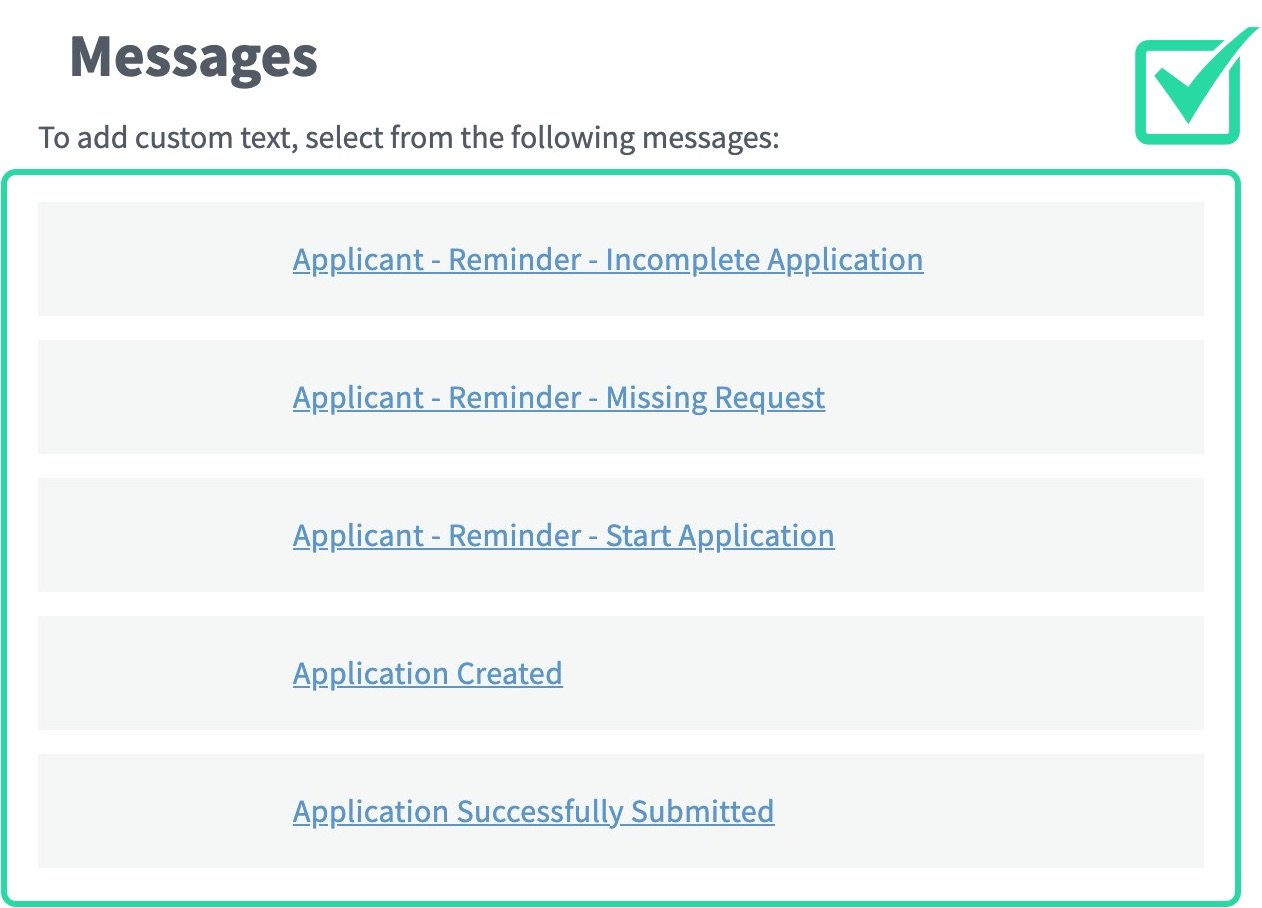Table of Contents
It’s every scholarship manager’s wish - to find the perfect recipients to receive the award(s) they are going to distribute. To know they made a difference in the lives of the people they wanted to help the most. There’s nothing quite like that feeling when they can say without a doubt, “I helped these qualified applicants go to college so they can chase their dreams.”

Scholarship programs were created because at some point someone decided they wanted to give back, and aid another in having the funds to go to college. While most people understand that they want to help someone, they also know that if they have specific criteria in mind for who they hope to help, there is a selection process that must be in place.
It is because of this desire to make sure the intended recipients receive the allotted funds that scholarship applications were created. Applications make the scholarship selection process less challenging, and focusing on quality over quantity is the most important component when receiving a plethora of applications from hopeful candidates.
In the words that follow, we’ll guide you through everything you need to know about how to start a scholarship program that will yield higher quality applicants.
CHAPTER 1
Attracting Quality Applicants
One of the best ways to ensure that you have the best pool of candidates to choose from, is to attract the exact type of people your program is looking for. After all, there’s nothing worse than having to report to your donors and sponsors that an unqualified person managed to slip through the cracks of your scholarship selection process, and be chosen as a recipient.
The question is, “how can you find the highest quality applicants?” It all starts with defining who you want and then creating an application that reflects that. Before the task of creating your actual application however, it’s a good idea to spend time brainstorming and considering exactly what you’re looking for in a candidate. After you have defined the perfect candidate, then add qualifiers and application questions that speak to that unique persona.
Your criteria might look similar to this:
Strong GPA
Several scholarships require a 3.0, 3.5, or even higher
Extreme Financial Need
There are several people that dream of going to college that simply can’t afford to. You can set the income level requirements to whatever number you deem appropriate.
Geographic Location Restrictions
Your fund might want to limit where applicants can reside/attend school. In fact, some scholarships require attending a specific institution as well.
Demographics Required
The beauty of running a scholarship program is that you make the rules. If you would prefer that the scholarship only goes to women of color who want to become doctors for example, you would simply add those qualifiers to your application.

Field of Interest Limits
There are scholarships that are intended for educators, musicians, mathematicians, etc… If your scholarship is aimed at a specific field of interest, you can write that into your criteria too.
When you’re ready to move onto the step of writing your application, using a template is the fastest and easiest method of creating it.
CHAPTER 2
Scholarship Application Template Mistakes To Avoid
Using an application template will help you to create your form much faster than writing one from scratch. Before you worry about not having a unique one for your fund, know that templates don’t have to be used exactly as they are written. Put another way, a template is merely meant as a guide, and is therefore not a document that is set in stone. On the other hand, when you choose a scholarship template, there are 8 mistakeswe see people making regularly . A few of these include:
Pulling a random application template off the internet, or worse, not using a template at all. The problem with many internet templates is they don’t always address the elements that should be included for a scholarship fund application.

Changing the form in a way that makes it too complicated for the average applicant to fill out. If it’s too complicated, even your most qualified candidates may feel it’s not worth their time and energy to answer your questions.
Forgetting to use field validation to ensure you get the answers you are looking for (i.e. if you want a phone number to appear in a certain format, your form should include field validation rules to restrict formatting.)
You don’t have to reinvent the wheel and try to create an application form on your own, from scratch. Instead, take advantage of the lessons learned from those who have gone through the process before you. Use scholarship management software that walks you through the process and gives you templates that you can adapt to your unique needs.

Pro tip: When writing your application, don’t forget to ask the right questions, and seek help from others if you need it.
Extra assistance with building scholarship application forms is one of the primary reasons program managers choose to work with SmarterSelect. We have a community forum that gives you direct access to your fellow managers so that you can ask questions and get feedback from them. And, if you have any insights for others, you can share your advice and tips as well.
CHAPTER 3
Handling Responses That Are Inaccurate on Scholarship Forms
Whether you have been in the scholarship management business for five minutes, five months, or five years, you’re likely going to see a wide variety of errors that can come through on scholarship applications. What’s worse is that even qualified candidates can make these errors simply because they didn’t understand what was expected from them.
The most common mistakes we have seen candidates make when filling out their scholarship applications are:
-
Being unaware of or ignoring the application criteria.
-
Submitting essays that are too long/short, or completely miss the mark - you can’t give the answer that program managers want if you don’t understand what is expected.
-
Neglecting to submit all materials.
-
Missing deadline/Being unaware of what the deadlines are.
-
Responding to questions in the wrong format
Errors can eliminate a candidate from the scholarship selection pool, but you can help your applicants avoid many of the common mistakes with a few simple tweaks to your application form. Here are 5 ways we have found to handle inaccurate answers:
Implement Field Validation
This simple step can actually prevent answers that are formatted incorrectly.
Give Question Level Tips and Advice
When you tell people what to do, users know precisely how to answer your form questions correctly.
Use Application Management Software to Avoid Late Submissions
With software on your side, a late submission can be blocked. The user will be met with a “deadline expired” notice, or a similar notice. Furthermore, your software can keep the pool of candidates apprised of important dates via automated communications/warnings of impending deadlines.

Implement Better Qualifiers
This is the easiest and most effective means of preventing unqualified applicants from even applying.
Add an FAQ Section to Your Application
Not only does an FAQ section address the frequent mistakes so candidates can avoid them, it will save you countless hours of troubleshooting and correspondence.
These tips should help your applicants avoid the most common mistakes. Then again, if they can’t fill out an application properly even with all the assistance you have given them, perhaps they are not the best person to receive your award.
CHAPTER 4
Keep In Touch With Applicants Along the Way
An important element required for ensuring that only the highest quality candidates complete the application is communication. Keeping in touch with your pool of potential recipients may assist in keeping your program top of mind for them so they can deliver the materials required to get to the next level of the scholarship selection process.
Why is communication with prospective candidates so critical? Simply put, even the best of the best in any group has a lot going on in their daily lives. Consider for a moment how many reminders you keep on your own calendar for your daily tasks. We are all exceptionally busy, with everything and everyone is demanding our attention.
While scholarship communication is necessary, you can automate much of it so you’re not a slave to the calendar. We cover this more in depth in our blog post When and How to Automate Scholarship Program Communication, but here’s what you really need to know:
For the most effective communication, you should batch and schedule the deployment of any messages/reminders you need to send to your pool of candidates.

Utilizing both SMS and email is probably going to be your best bet if you hope to reach everyone in your database.
Communication goes beyond sending direct messages - you can also communicate automatically within your scholarship application form. For example, adding question level help is a great way to communicate to your applicants what you want them to write and deliver to you.
Creating an answer bank for frequently asked questions is another great way of communicating with your applicants on autopilot
Your communication efforts don’t have to add a lot of time to your work schedule. However, if you hope to keep the qualified people in your prize pool, you’ll take the steps necessary to keep in touch.
CHAPTER 5
Choosing Your Recipients - How to Filter Down to the Most Qualified Candidates
Another effective tool in the scholarship selection process that all but guarantees the highest caliber of recipients, is your scoring rubric. The more effort you put into this element ahead of time, the easier it will be for your evaluation team to filter out unqualified individuals. While no one likes being rejected, the simple fact remains that you only have so many awards to give.
To that end, it’s imperative you include elements in your rubric and scoring that streamlines the tedious task of going through applications. Two things that may help simplify things are:
-
Removal of applications that don’t have all required materials
-
Filters that delete applicants that don’t meet criteria (i.e. exceeding income limits or not meeting GPA requirements)
It may also be beneficial to remove identifying data such as names, addresses, age, etc… to eliminate the potential for bias amongst your evaluation team.
CHAPTER 6
Highlighting Recipients of Your Scholarship Award
Once you finally select your award recipients, it’s time to share this news with the world. Read our post on 7 Ways to Highlight Scholarship Award Recipients for some ideas on how to do this.
Why should you highlight the recipients? For starters, it’s a great way to promote your scholarship fund and attract high quality candidates for the next round of your program. It’s a dynamite means of marketing to your donors, recipients, and business.
While you are promoting, you can also share the social impact statistics from your scholarship program. Not only will this look good to your sponsors, it may be a way to secure mainstream media attention for your fund.

CHAPTER 7
Gather Feedback Before the Dust Settles
You may wonder what feedback has to do with quality over quantity in terms of attracting qualified applicants. The best answer is that finding out what your current pool of applicants and team members thought about this round can help you tweak things to make the next one better.
In our post, 5 Ways to Gather Scholarship Program Feedback from Applicants, we explain that feedback is the best way to improve your scholarship program. Just a few things you can ask applicants, team members, and even donors include, but aren’t limited to:
-
What did you think of the application questions?
-
What would you have done differently (in terms of questions or evaluation)?
-
Was the criteria (for applicants) easy to understand?
-
How did you feel about the recipients that were chosen?
-
Were the deadlines appropriate? And so on…
After you gather all feedback, you can use the scholarship program takeaways you’ve acquired to make the next round even better than the last.
Where to Go From Here
We hope that you found this guide to attracting qualified candidates helpful. Remember, quality is more important than quantity when awarding scholarship funds. To save time and money on the process, use scholarship application software. From application creation to communication, evaluation to announcing the recipients, we think you will find that SmarterSelect is the most efficient way to run a scholarship program. Learn why thousands of scholarship managers choose us every year. Sign up for a free trial today.
Start Your Journey to Better Application Management Today!
Priced for non-profits. No set-up fees.
No long-term contracts. Powerful features.
Go live in less than 24 hours.

